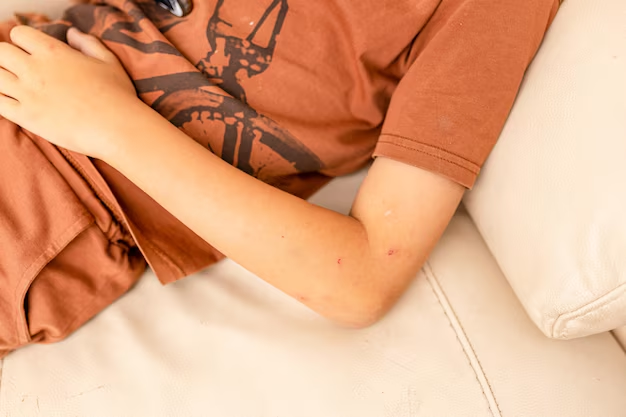Discovering the Roots of Measles: What You Need to Know
The concern around measles might feel like a relic of the past for some, but understanding its causes and implications remains as crucial as ever. With outbreaks occasionally making headlines, knowing what triggers and propagates measles can empower communities and individuals to take preventive measures. Let’s dive deep into the world of measles, distilling the complexities of this viral disease into a conversation that keeps you informed and ready to act.
Unmasking the Virus: What is Measles?
The Culprit: Measles Virus
At the heart of the disease lies the measles virus, a paramyxovirus belonging to the genus Morbillivirus. This virus is highly contagious and can spread like wildfire within susceptible populations. Transmission occurs through respiratory droplets when an infected person coughs or sneezes. Notably, the virus can linger in the air for up to two hours, making enclosed spaces particularly risky.
The Sneaky Nature of Spread
Measles is infamous for its stealthy spread before symptoms even appear. Individuals can transmit the virus up to four days before the telltale rash emerges and for about four days afterward. This asymptomatic window contributes significantly to its contagiousness, often leading to outbreaks in communities with low vaccination rates.
Beyond the Virus: Biological and Environmental Factors
The Role of Immunization
Vaccination is the frontline defense against measles. The measles vaccine, often given as part of the MMR (measles, mumps, and rubella) combo, is highly effective. It not only protects the individual receiving it but also contributes to herd immunity, reducing the chance of virus transmission in the community. However, gaps in vaccination coverage can lead to outbreaks, underscoring the importance of maintaining high immunization rates.
Demographics and Geography
Certain demographics and geographical areas are more vulnerable to measles outbreaks due to factors such as:
- Refusal or hesitancy toward vaccination: Cultural, religious, or philosophical beliefs may lead some individuals to avoid vaccination.
- Access issues: Remote areas or regions with weaker healthcare infrastructure might struggle to provide consistent vaccinations.
- Population movement: Migration and travel can introduce measles to new areas, spreading outbreaks across borders rapidly.
Recognizing the Warning Signs: Symptoms and Diagnosis
The Early Indicators
Measles typically begins with cold-like symptoms, which may include:
- High fever
- Cough
- Runny nose
- Red, watery eyes (conjunctivitis)
The Classic Rash
A few days into the infection, the distinct measles rash begins, starting at the hairline and spreading downward. These reddish-brown spots can coalesce as they move, leaving no doubt about the infection’s presence.
Confirming the Diagnosis
Medical professionals typically diagnose measles based on the characteristic rash and symptoms. In cases where confirmation is needed, a blood test can check for the presence of measles-specific antibodies.
Unpacking the Impacts: Potential Complications
While measles is often seen as a childhood disease, its complications can be severe, especially for certain groups.
Risk Groups and Complications
- Young children and toddlers
- Unvaccinated pregnant women
- Individuals with weakened immune systems
Potential complications include ear infections, diarrhea, pneumonia, and encephalitis. Each poses significant health risks, and in some cases, measles can be life-threatening.
Navigating Outbreaks: Prevention and Response
Stopping the Spread
- Vaccinate: Ensure everyone in your household receives the MMR vaccine.
- Rapid Response: Health agencies often implement measures like quarantine and public awareness campaigns to curb outbreaks.
- Healthcare Readiness: Clinics and hospitals prepare to manage and treat patients swiftly, minimizing further spread.
Handling Exposure
If exposure to measles is suspected, it's crucial to:
- Consult healthcare professionals immediately for evaluation.
- Isolate from non-immune individuals to prevent transmission.
- Discuss the possible need for post-exposure vaccination or immunoglobulin to mitigate symptoms.
Breaking the Myths: Misconceptions Around Measles
“Measles is benign in healthy children.” While generally mild in healthy individuals, the risk of complications cannot be overstated.
“Natural immunity is better than vaccination.” Contracting measles poses unnecessary risks, whereas the vaccine offers safe, effective immunity.
“Measles is eradicated.” Though significantly reduced, measles persists in areas with low vaccination rates and can rapidly re-emerge.
The Bigger Picture: Global Efforts and Challenges
Collaborative Initiatives
Global initiatives strive to eliminate measles and include:
- WHO’s Global Measles and Rubella Strategic Plan: Aims to enhance vaccination coverage and response.
- NGOs and Health Ministries: Implement education and vaccination drives to boost awareness and support immunization.
Ongoing Barriers
Challenges persist, including:
- Vaccine hesitancy and misinformation: Driven by misinformation and distrust in healthcare systems.
- Health disparities: Access and affordability issues in underserved communities.
- Pandemic-related disruptions: COVID-19 has strained healthcare resources, causing vaccination rollout delays.
A Path Forward: Community and Individual Action
You play an essential role in defending against measles:
- Stay Informed: Keep updated on measles risks and vaccination schedules.
- Engage in Dialogue: Encourage open discussions about vaccine benefits.
- Support Public Health Measures: Participate in campaigns enhancing awareness and access to vaccines.
In short, measles might seem like an ancient concern, but staying vigilant, informed, and proactive ensures that you and the global community advance toward a measles-free future.
📝 Key Takeaways
- 🤔 Understanding: Measles is caused by a highly contagious virus, spreading before symptoms appear.
- 💉 Prevention: Vaccination remains the most effective defense.
- 🌍 Global Impact: Travel, demographics, and vaccination accessibility affect outbreak potential.
- 🔍 Awareness: Recognize symptoms promptly, and engage in preventive measures.
- 🛠️ Action: Support vaccination initiatives and stay informed about public health guidelines.

Related Articles
- Are Measles Deadly
- Can Adults Get Measles
- Can You Get Measles If Immunised
- Can You Get Measles If Vaccinated
- Can You Get Measles If You Are Vaccinated
- Can You Get Measles If You Re Vaccinated
- Can You Get Measles If You're Vaccinated
- Can You Get Measles If You've Been Vaccinated
- Can You Get Measles More Than Once
- Can You Get Measles Twice